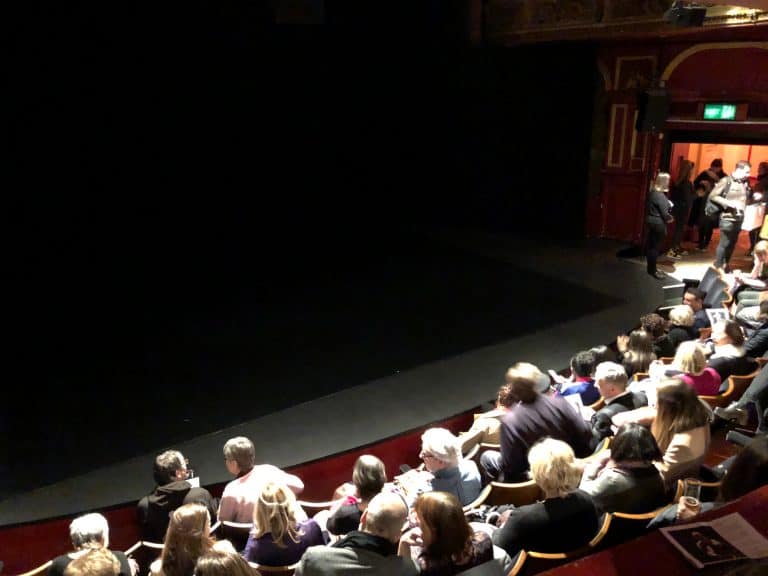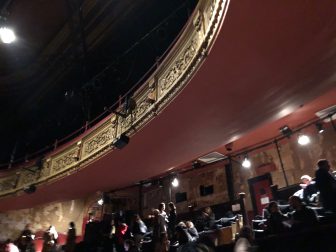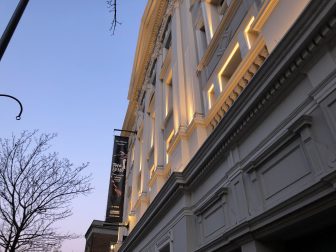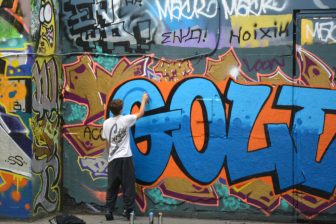
[ Mar.2019 ] Our friends invited us to see a contemporary dance by the Japanese dancer, Saburo Teshigawara, at the historical theatre called The Colonet in London.
When we got to the theatre, we found the theatre itself was very interesting.
The impression I had was that in the empty space, they put many antique things to create excessive decoration.
There were many rugs from the Middle East and Afghanistan, which gave the unique atmosphere of a nomad tent.
I used to love these carpets and my home in the past was a bit like this, so I felt nostalgic.
The floor of the bar where we met with our friends sloped downwards.
I looked this theatre up on the internet and found that this area of the bar used to be the theatre’s rear part of the stalls.
Originally, The Colonet opened on the 28th November, 1898.
The first production was called “The Geisha”, a musical comedy set in Japan, which was very popular in those days.
Back then, it was a proper theatre with a capacity of 1,143 people and the interior was luxuriously decorated in the style of Louis XVI, apparently.
But as a theatre, it did not last long and 18 years later, they started showing films and eventually in 1923 it became a full-time cinema.
In 1930, the capacity reduced dramatically to 515.
In the 1970s, there was an idea to demolish and redevelop it into an office building, but it was saved by a campaign by the local people.
In 2004, it was recognised as a Grade 2 listed building.
Now, The Print Room, a theatre and art company, is running The Colonet.
Apparently, they bought it in 2014 with a plan to refurbish the whole building, but the plan has not been realised yet.
Currently, 
We sat at this small theatre to see Teshigawara and although we were not at the front row, we felt the stage was very close.
The program was “The Idiot”, written by Dostoevsky.
Unfortunately, I have not read the book, so I could not follow the story looking at the dance.
Nonetheless, I was amazed by the very interesting movements of Mr. Teshigawara, who is 65 years old, and his partner, Rihoko Sato.
I had never seen anything like that before and I was surprised to see the movem
The mother language of the couple we were with is Russian and they told us later “We had to read ‘The Idiot’ at school”.
It seemed that the story had been deep in their heart and they were very moved by the dance.
They were saying, for example, “The first scene he was just standing was at a train station” and “In another scene, I could feel many people surrounding him” and so on.
There was a moment that a rat ran around them and the friend said “It is connected to the main person’s name, Myshkin”.
Before seeing it, I had done my homework and read some comments by English critics, but the main point of them was ‘the dance did not show the story well’.
But in fact, maybe, those English people did not understand “The Idiot” deeply, I thought later.





